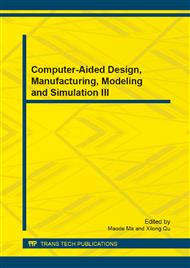p.3
p.7
p.12
p.18
p.22
p.27
p.31
p.35
Schedule System for Transport Aircraft Mission Simulation
Abstract:
In order to support the transport aircraft mission simulation for evaluating and optimizing the air transport plans, a schedule system is researched. Firstly, the method of the schedule system to handle the typical transport aircraft mission which can be divided into ground sections and flight sections is described. Moreover, the ground section is composed of several ground services such as fueling and on/off-loading. Secondly, the user interface which presents the schedule table by color bars is introduced. Next, the operating mode of the schedule system which is responsible for judging the time status and aircraft in simulation calculation is introduced. A sample case which includes eight aircraft flying in sequence is provided. The result of the sample case verified the schedule systems ability for promoting the mission simulation process.
Info:
Periodical:
Pages:
3-6
Citation:
Online since:
October 2013
Authors:
Price:
Сopyright:
© 2014 Trans Tech Publications Ltd. All Rights Reserved
Share:
Citation:


